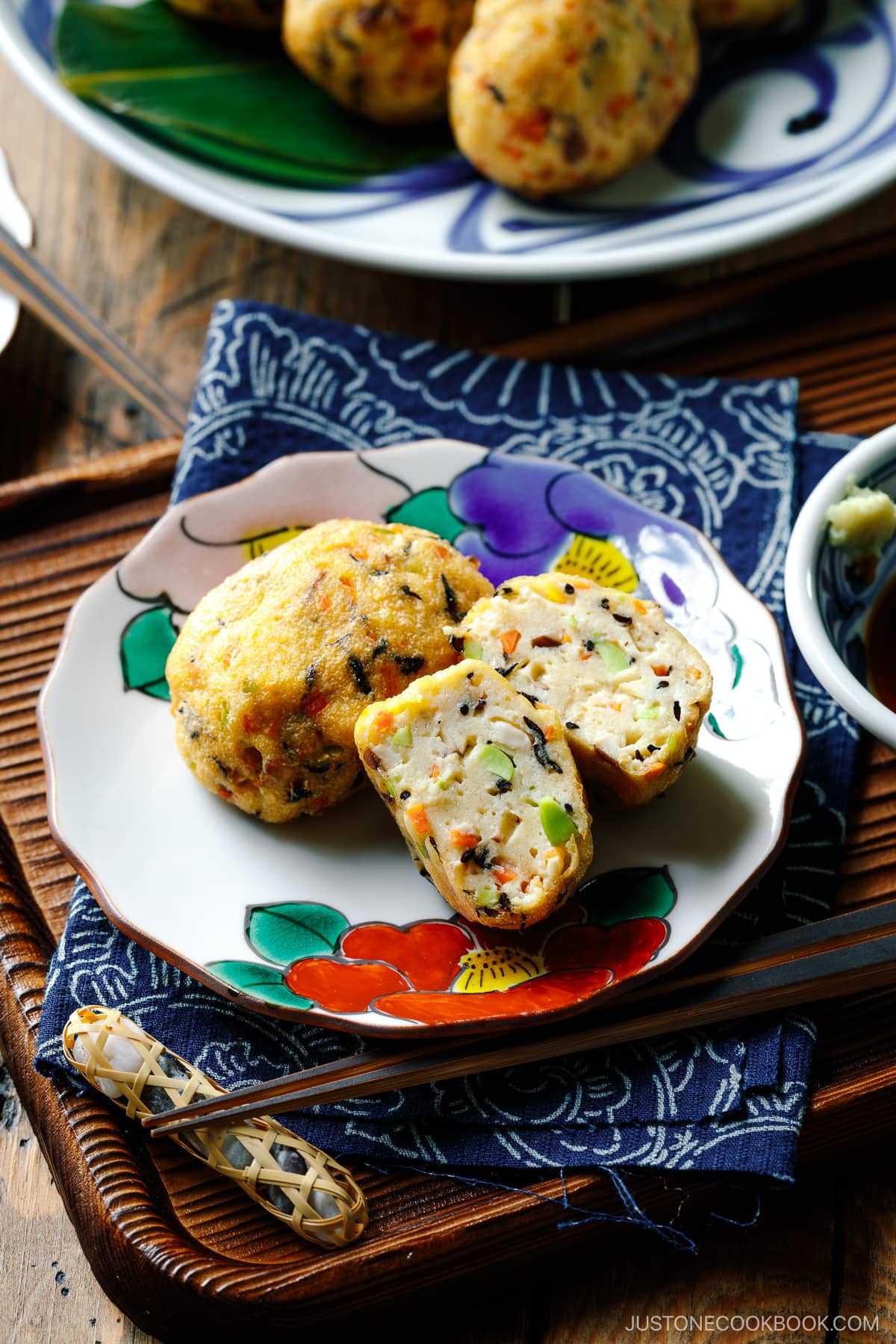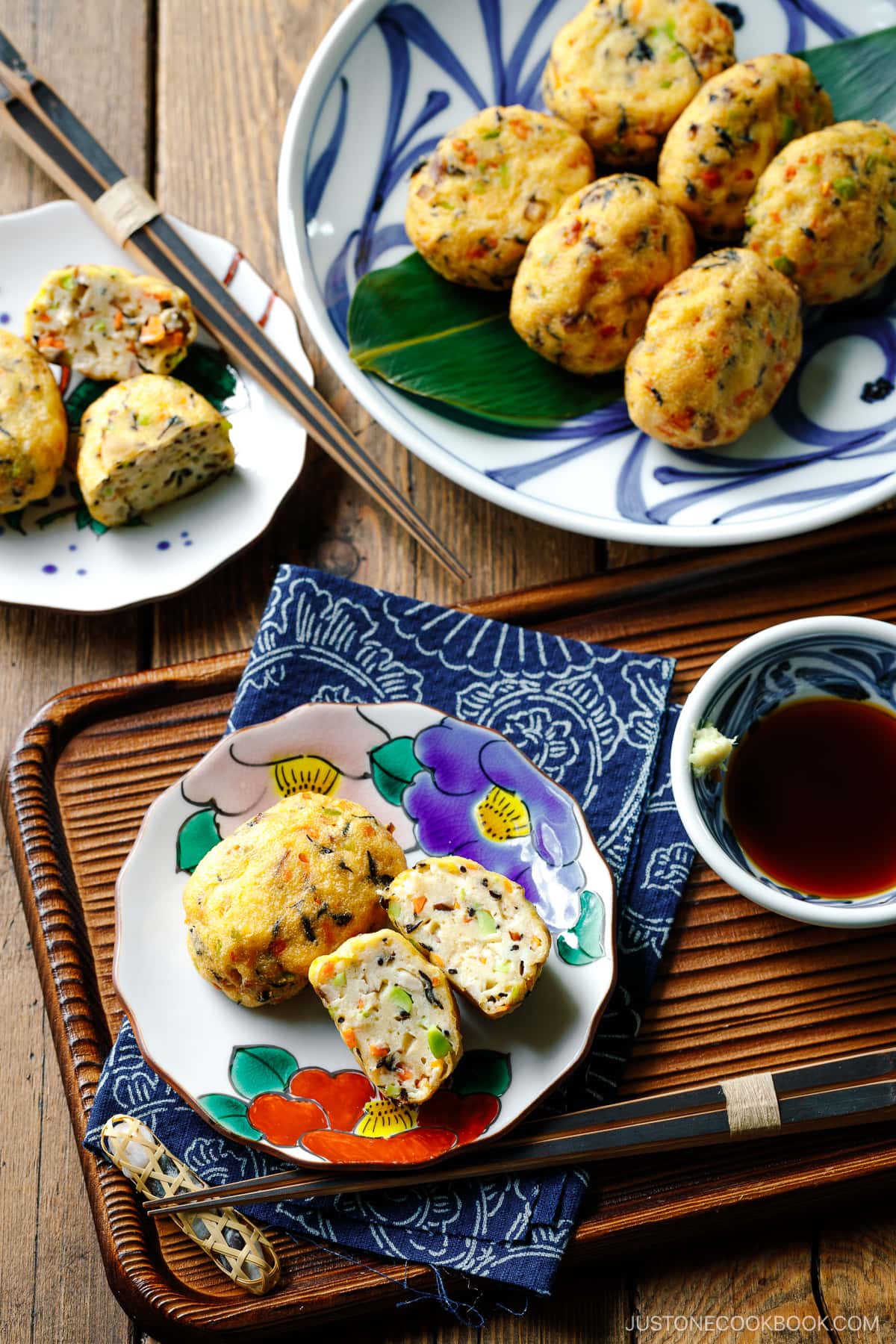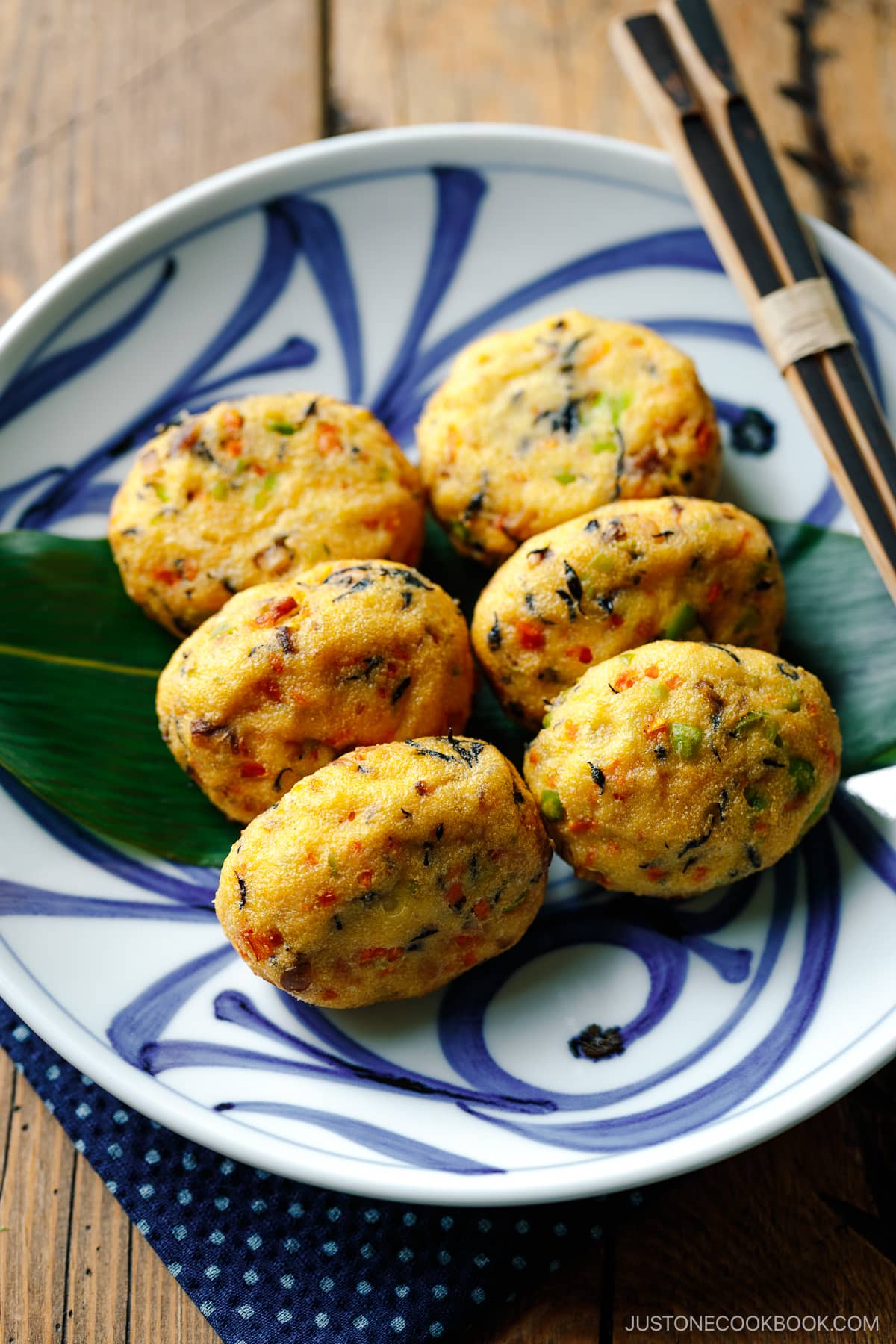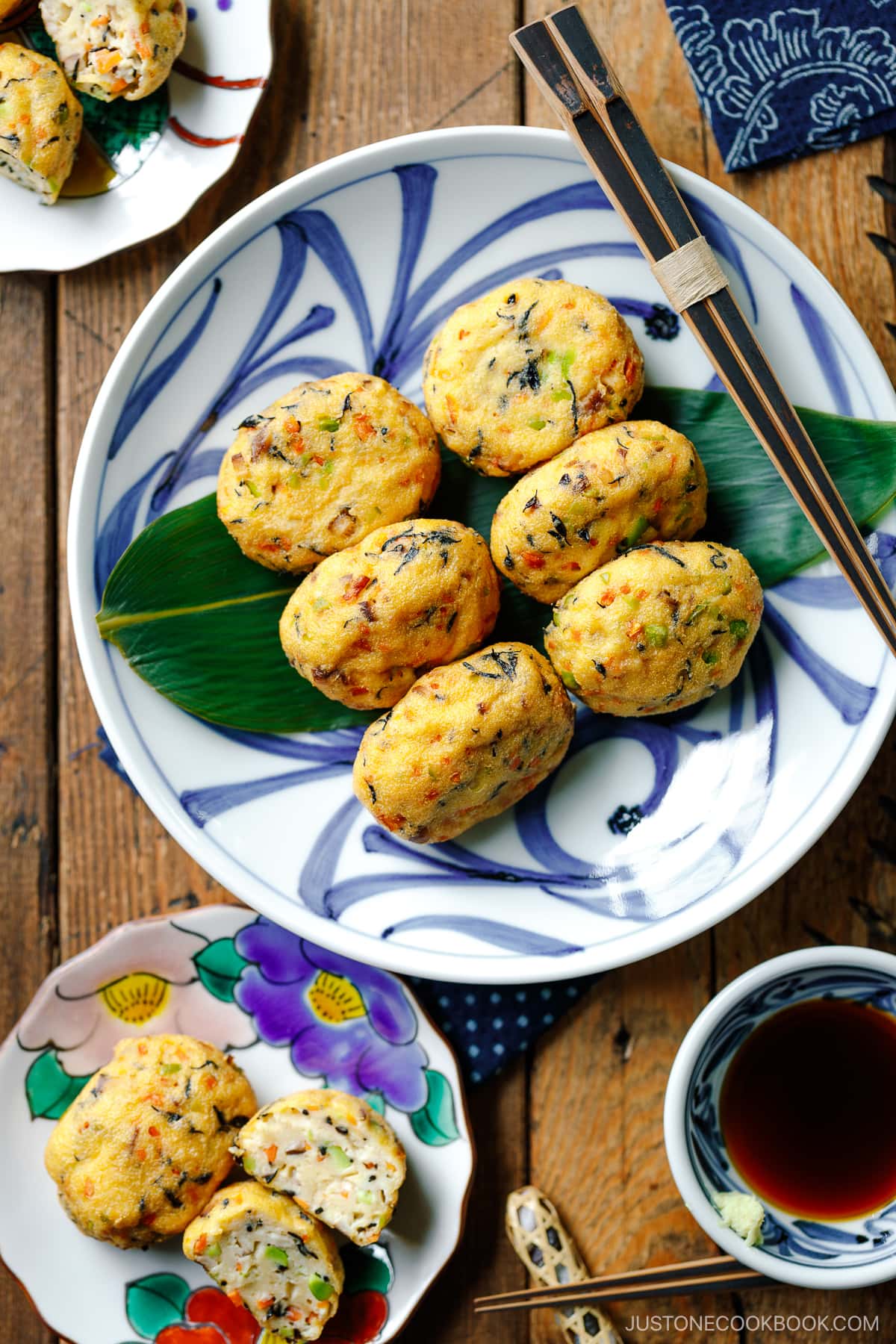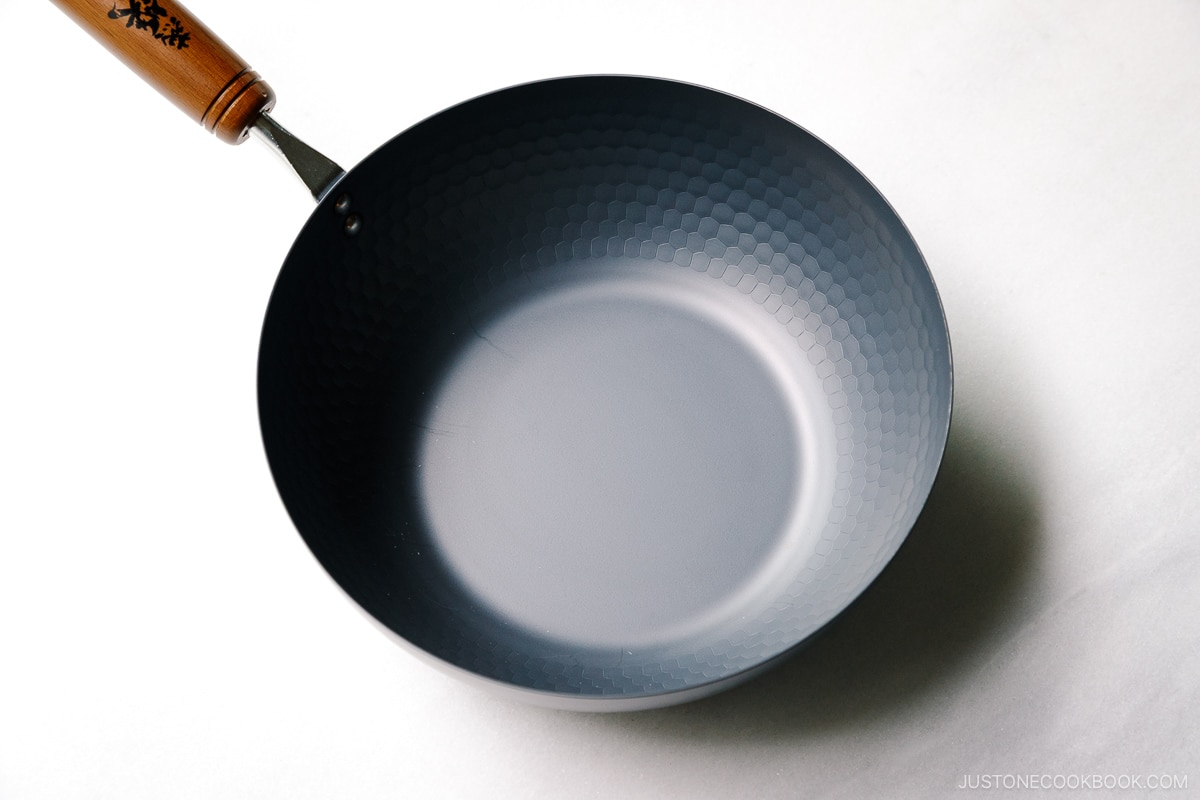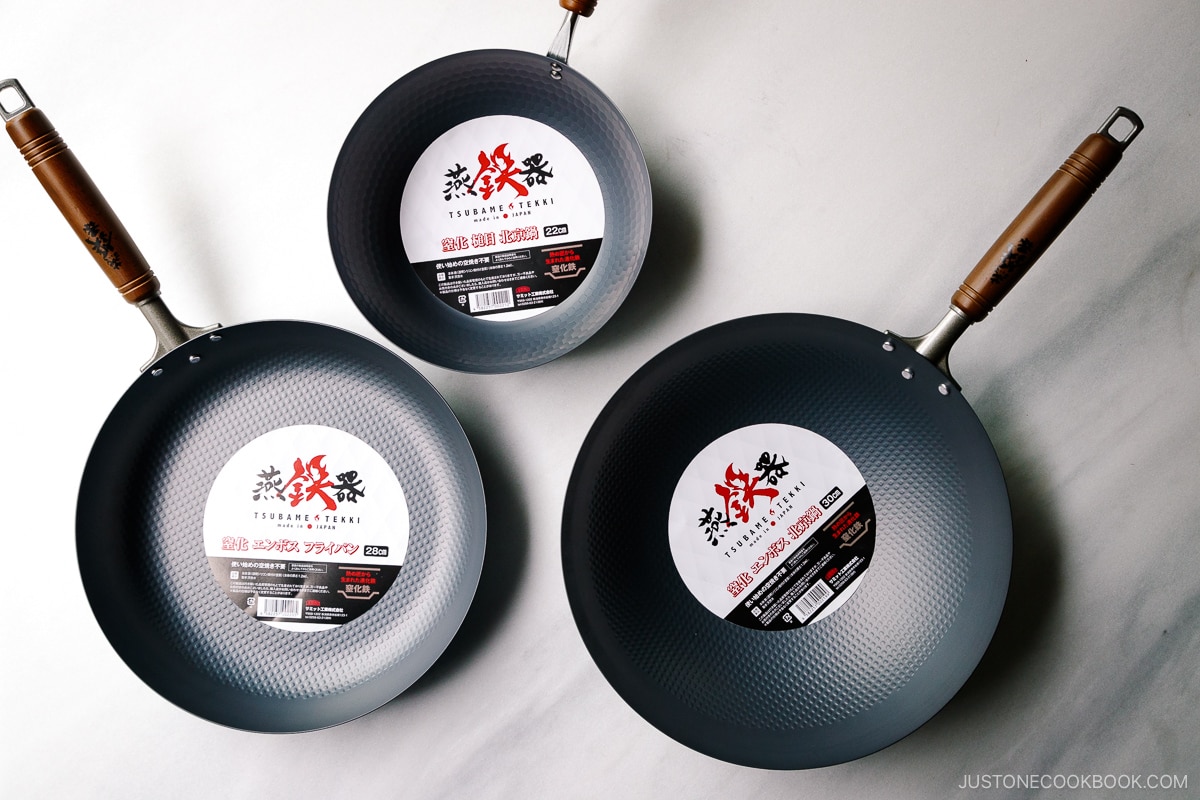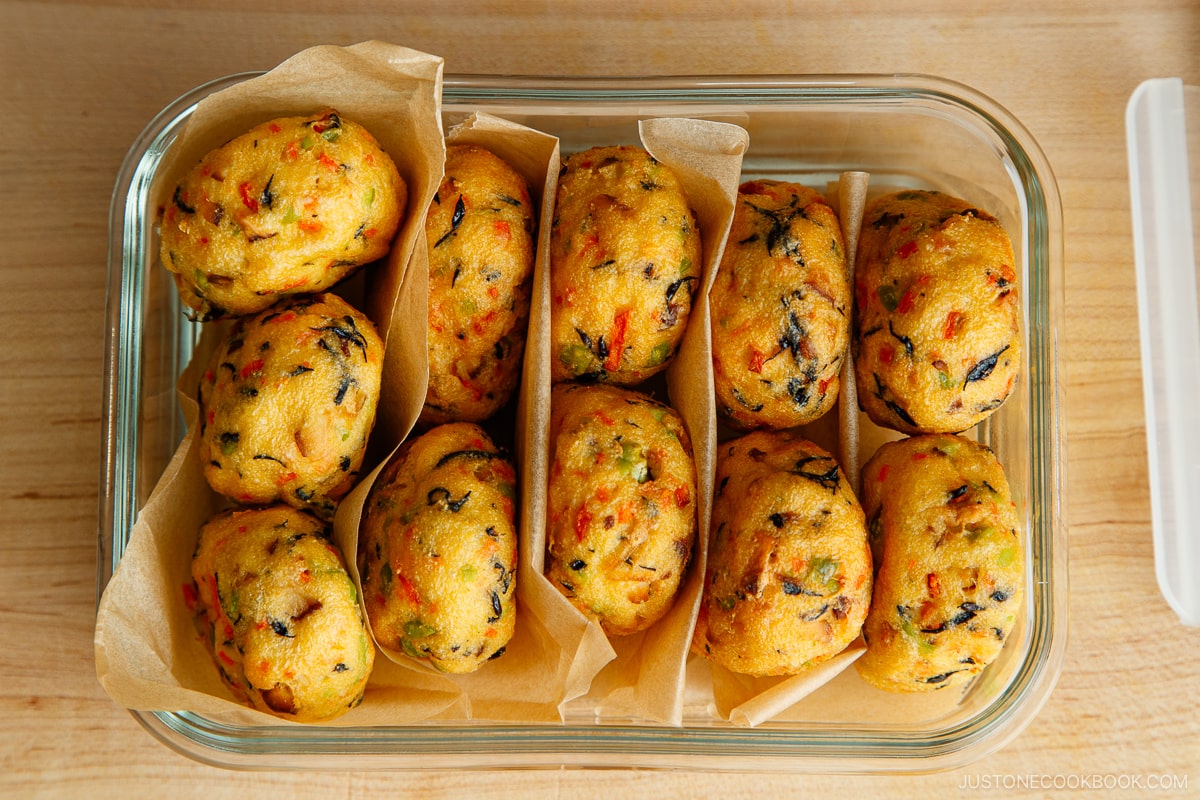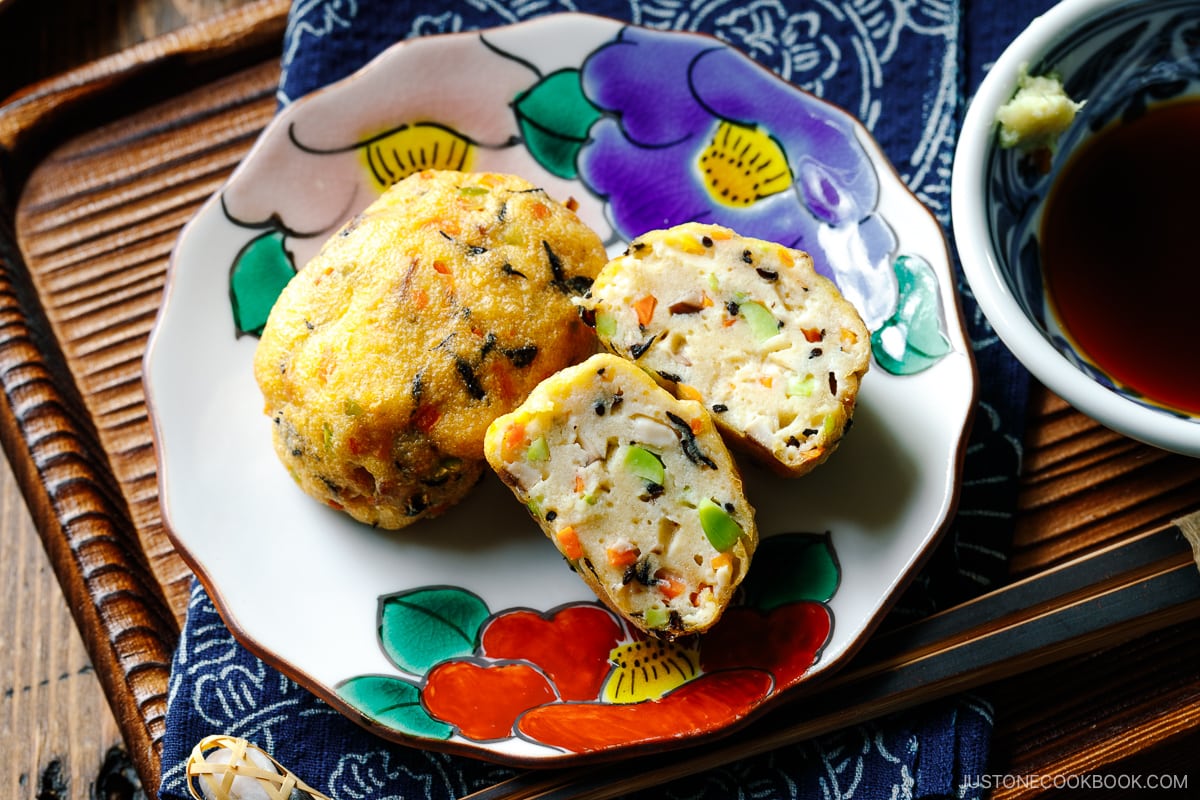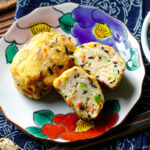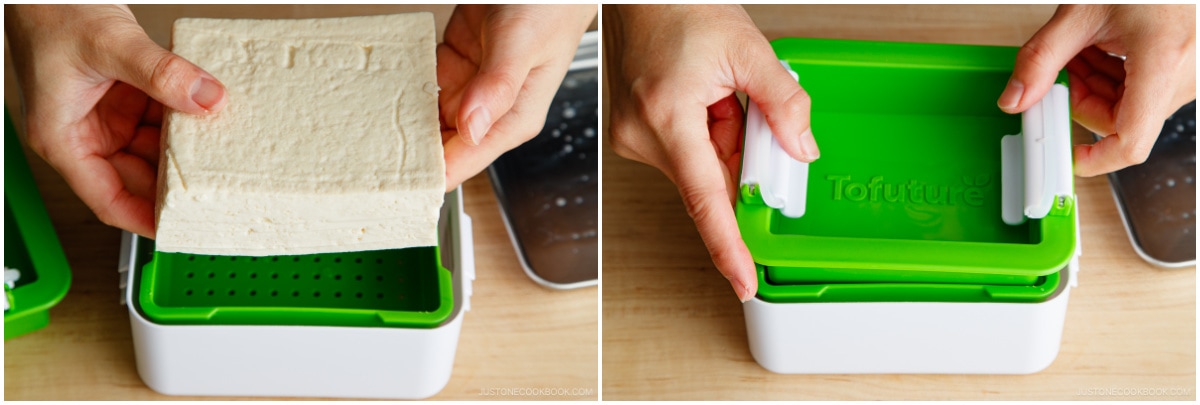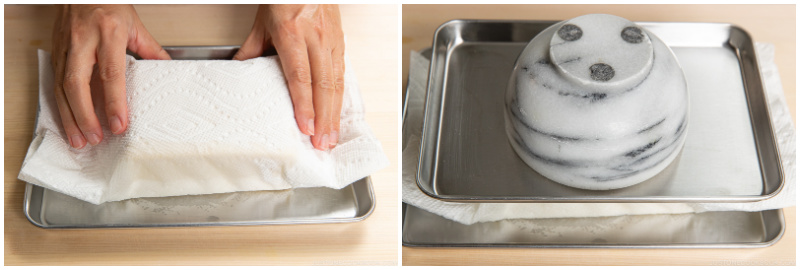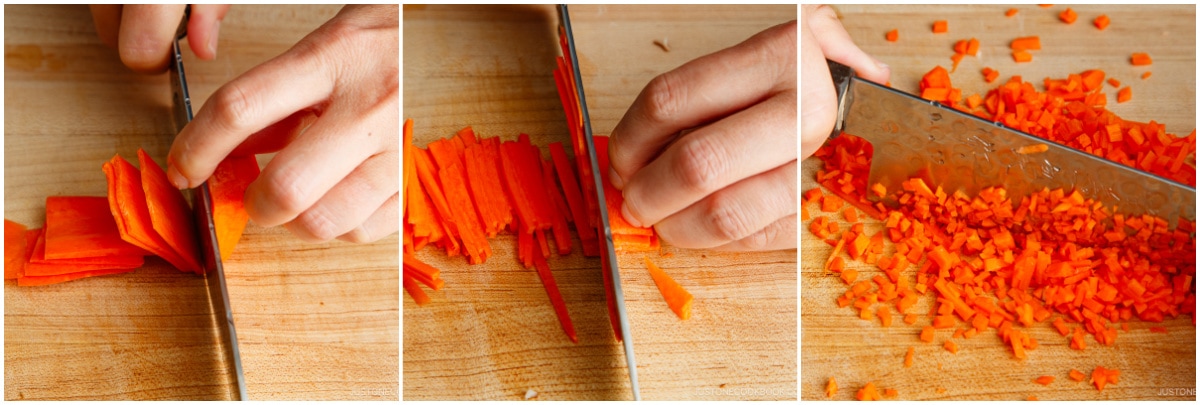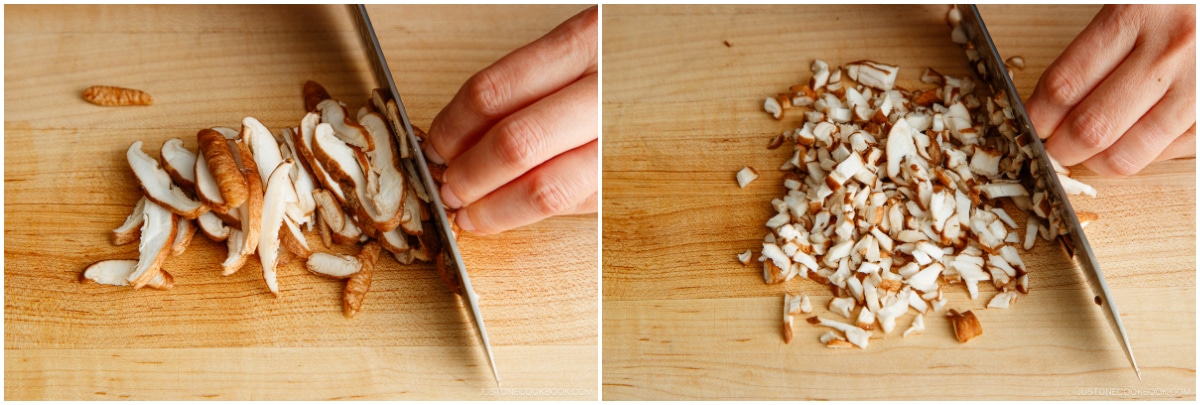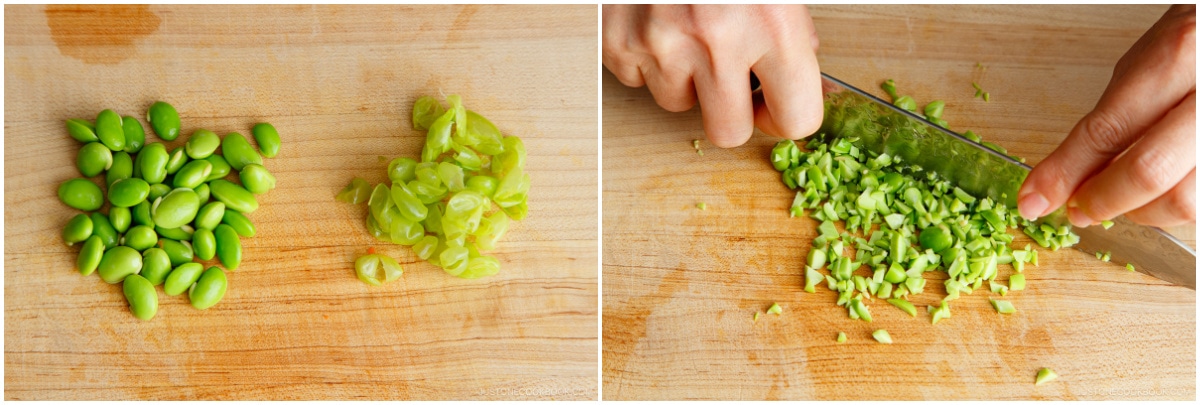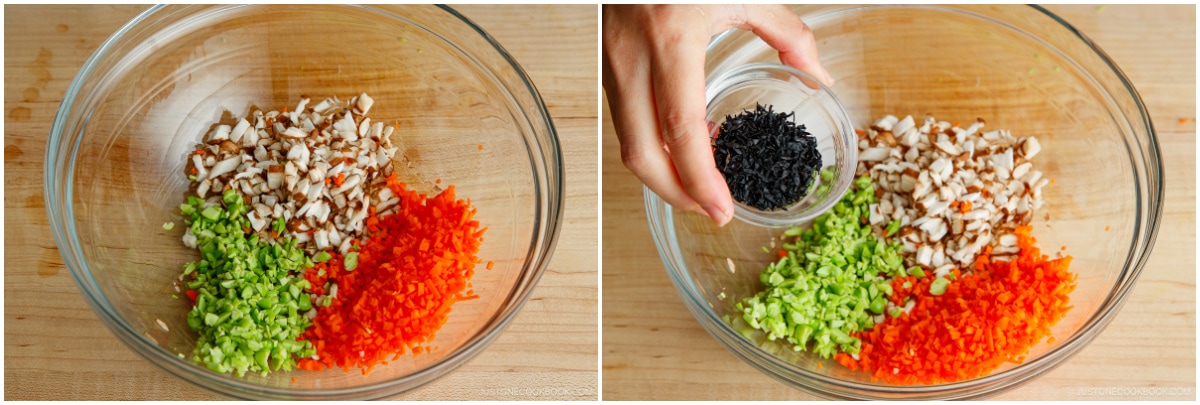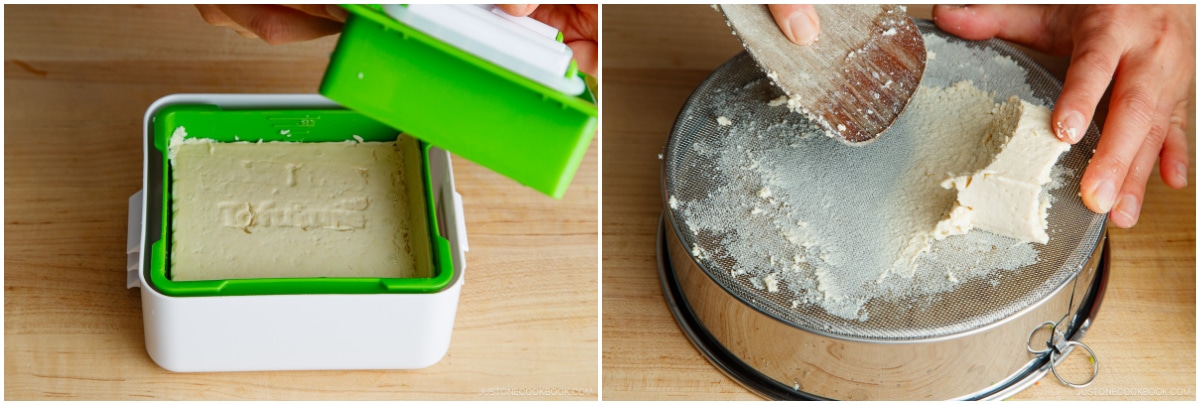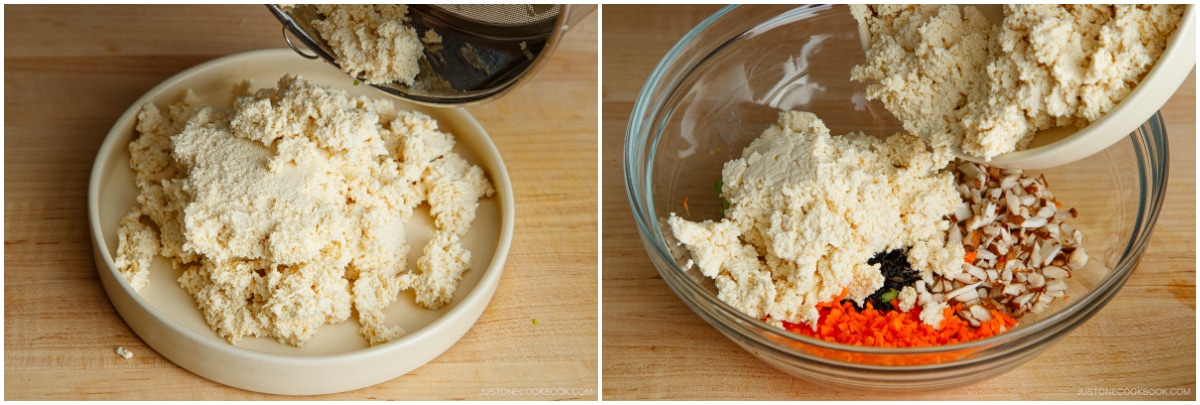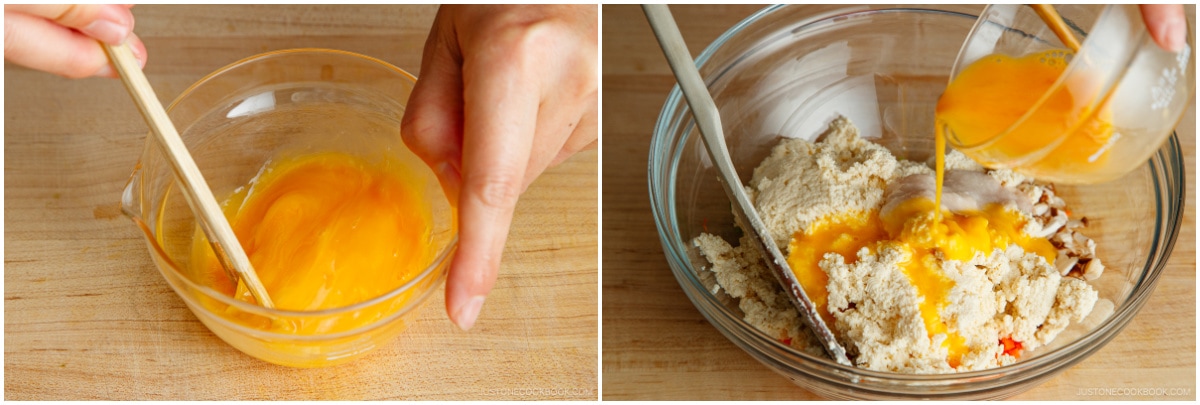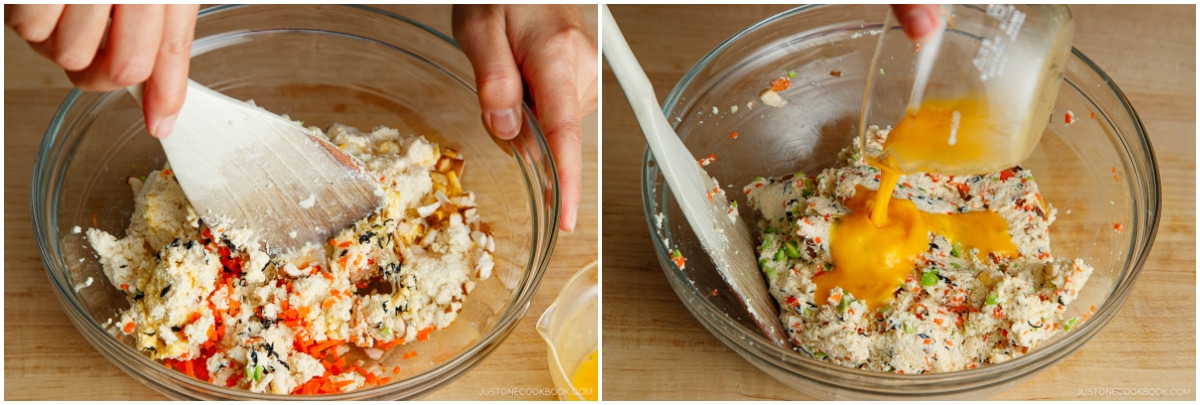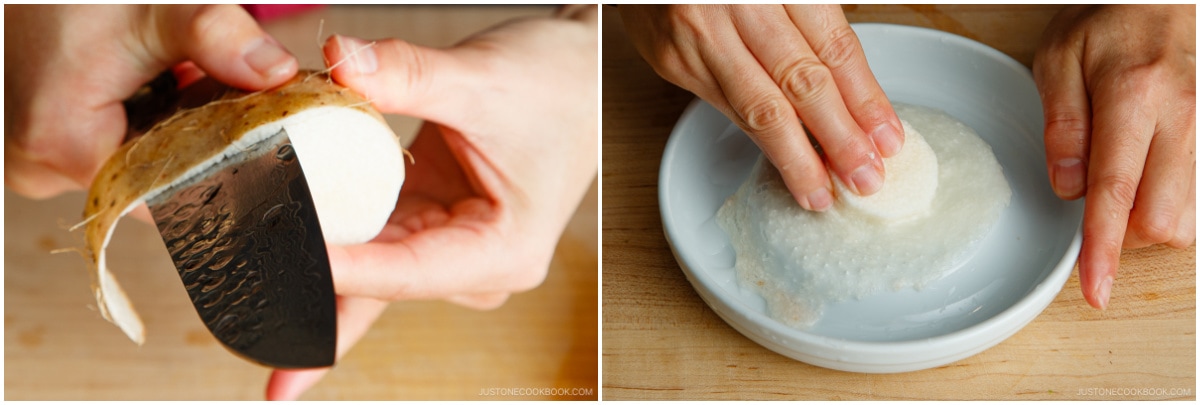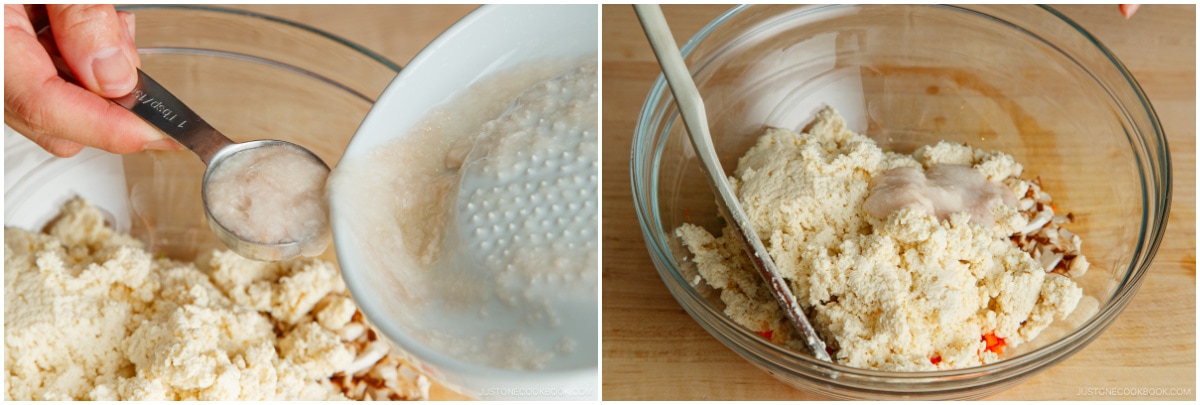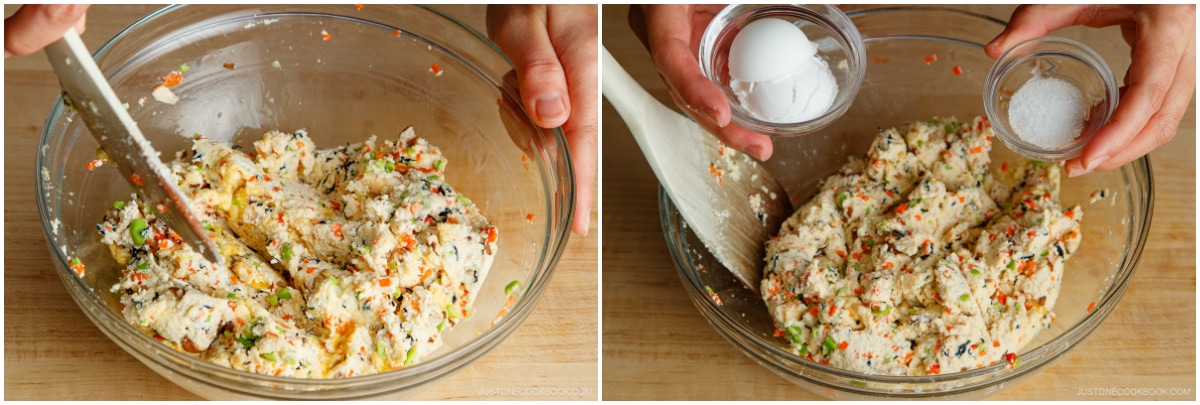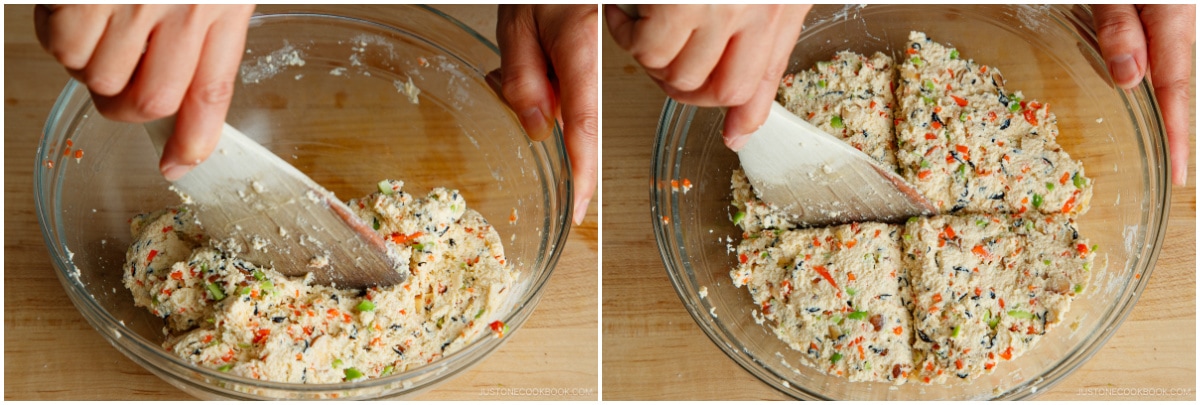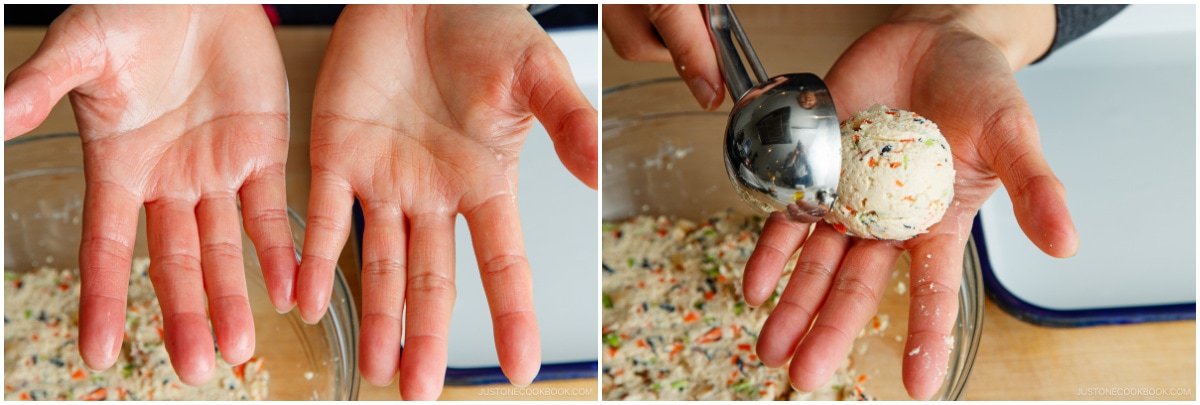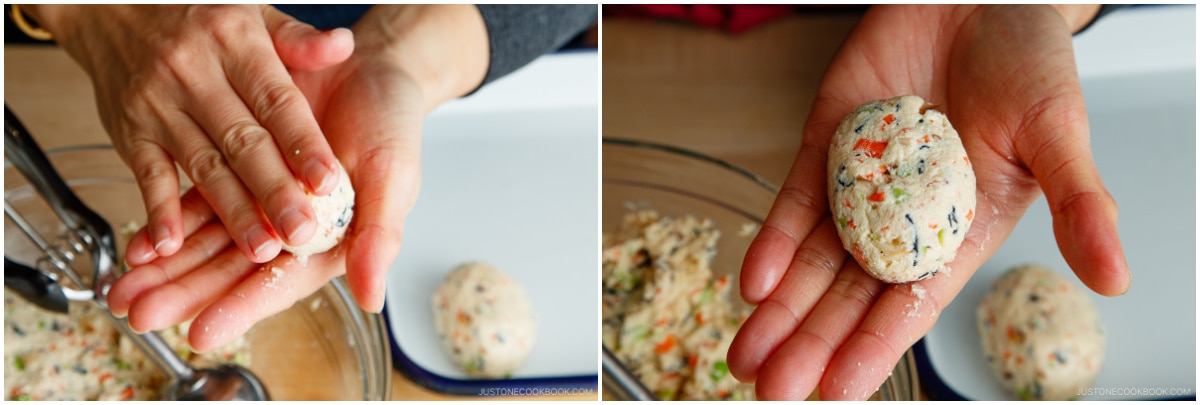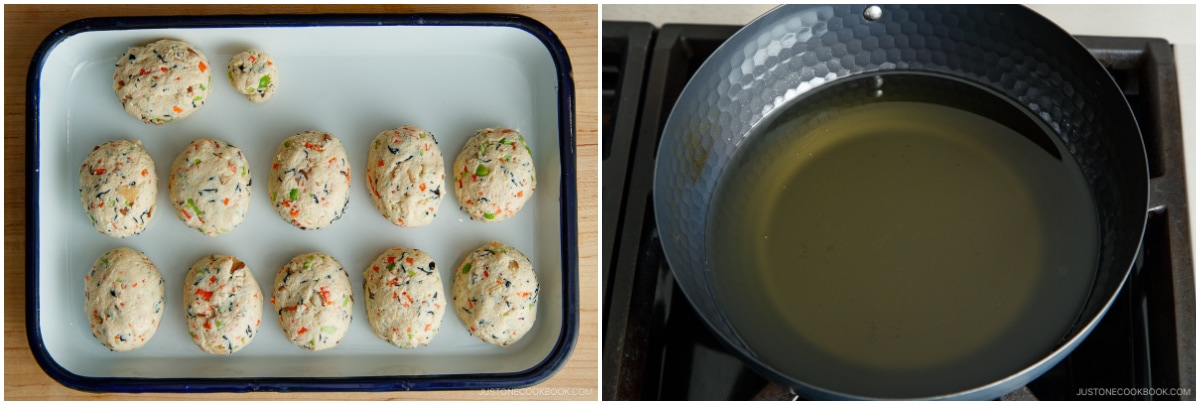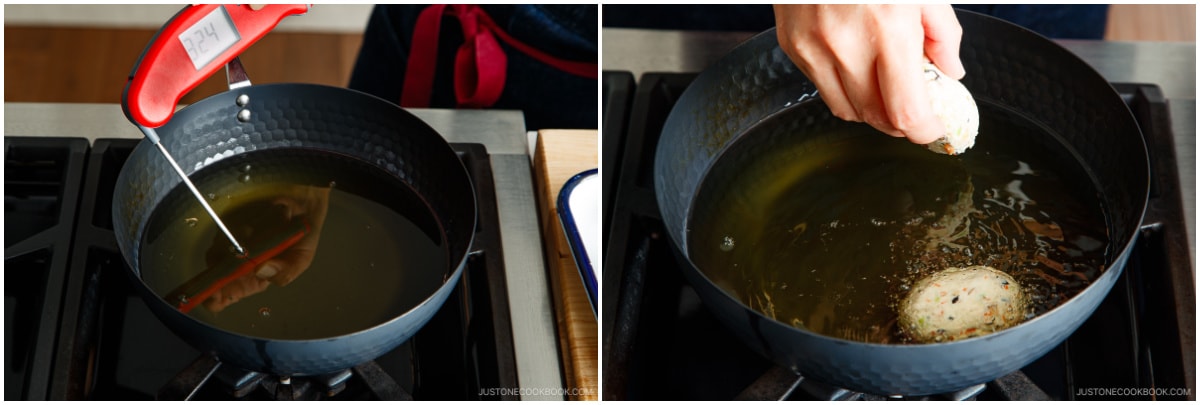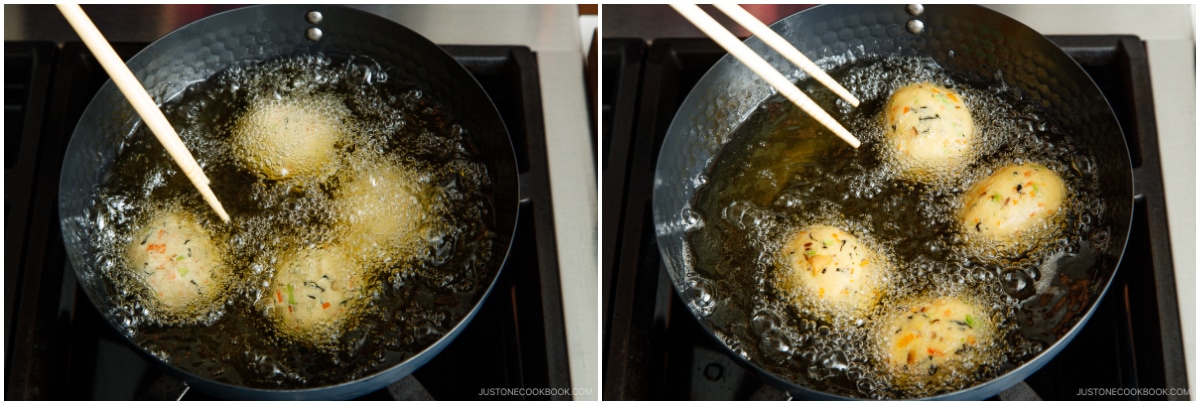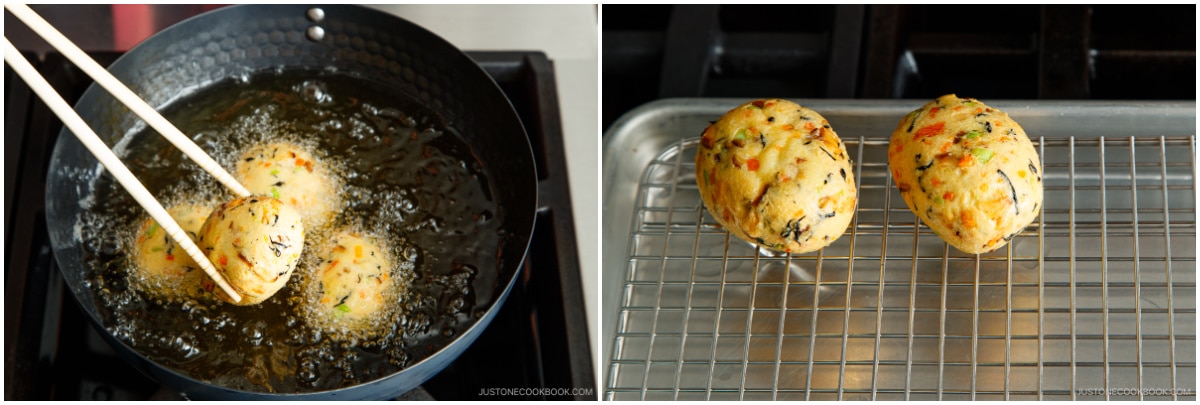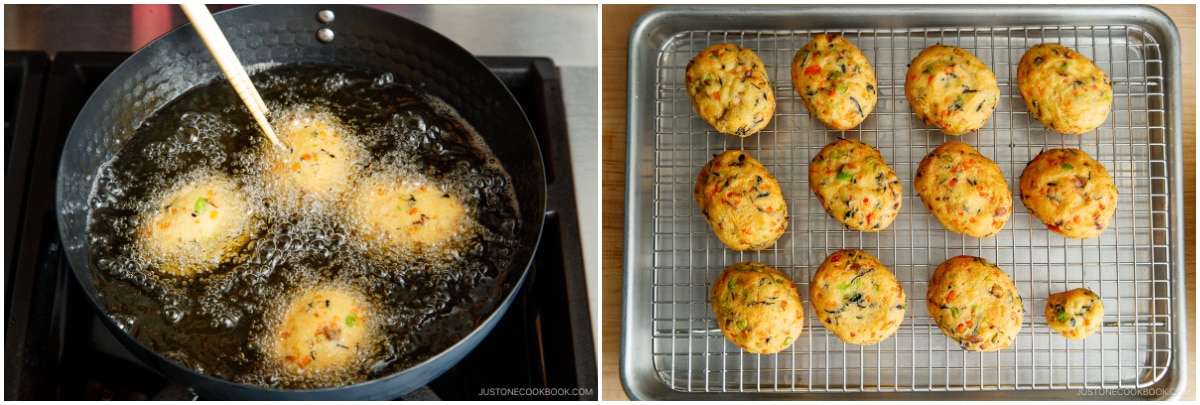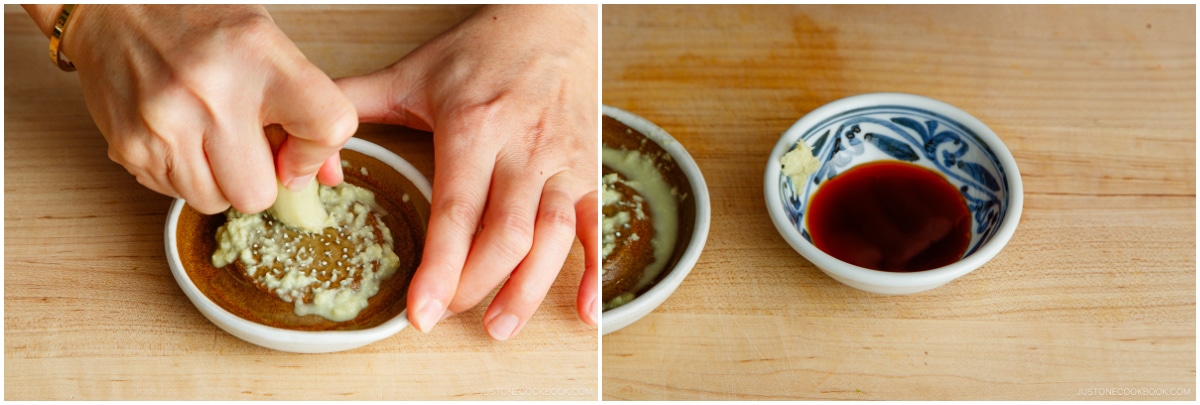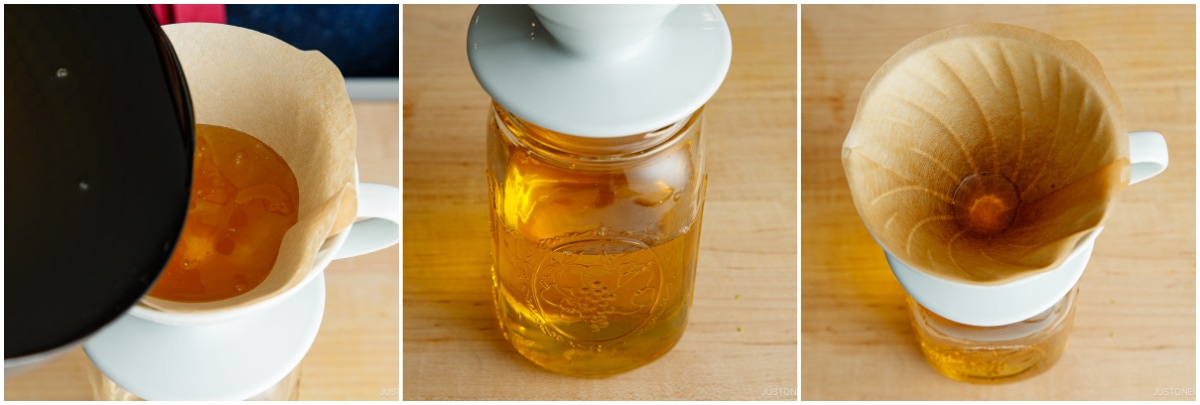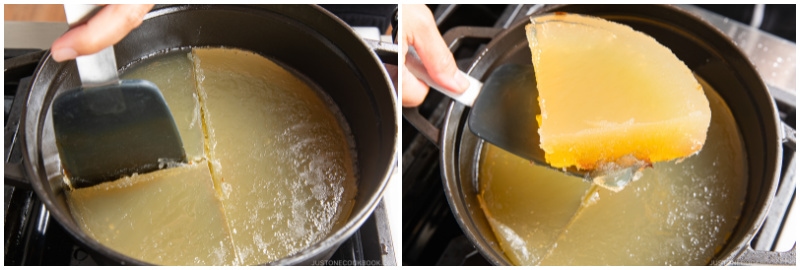As a busy working mom, I always thought that making Japanese Fried Tofu Patties or Ganmodoki (がんもどき) from scratch was a luxury. Since I could easily buy them from a Japanese or Asian grocery store, I often just resorted to the pre-made ones. However, I kept receiving requests from readers who wanted to learn how to make ganmodoki at home. With the growing interest, I decided to roll up my sleeves and get my hands on these tofu patties. Oh, I was sure glad that I did! The homemade ganmodoki not only tasted fresher and 100% better than the store-bought versions, but they also turned out to be easier and faster to make than I had imagined. My family just couldn’t get enough of them! Thank you to those who nudged me into making the recipe. I know some of you have been waiting for it for years, so I hope you have lots of fun making these at home!
What are Ganmodoki?
Ganmodoki (がんもどき) refers to Japanese deep-fried tofu patties made of mashed tofu as a base, mixed with minced carrots, shiitake mushrooms, finely chopped edamame (soybeans), and dried hijiki seaweed. Some other common ingredients include lotus root, burdock root, snow peas, green beans, and kombu strips. All the ingredients are bound together with beaten eggs before they are formed into small patties and deep-fried until golden brown. For vegans, you can use mountain yam (called nagaimo or yamaimo in Japanese) to replace the eggs. Japanese people enjoy ganmodoki as is by dipping them in soy sauce with grated ginger. Some use ganmodoki for Oden (Japanese Fish Cake Stew) or cook them in dashi broth (called Simmered Ganmodoki). For those interested in Japanese Buddhist Cuisine or shojin ryori (精進料理), these tasty vegetarian tofu “nuggets” were invented in the Edo period as a shojin ryori dish. Originally made with konnyaku (konjac) to retain a meat’s chewy texture instead of tofu, ganmodoki was given its name as its taste resembled wild goose meat, earning it the moniker “pseudo-goose” in Japanese. Ganmodoki is also called hiryouzu (飛竜頭) in the Kansai (Osaka) region.
Ingredients for Ganmodoki
You’ll need tofu, egg, or nagaimo/yamaimo (for vegan), and frying oil, but other than these, you’ll find this recipe forgiving. I’ve provided plenty of substitution options below:
Tofu – Use medium or medium-firm tofu and drain it for a few hours. Firm or extra-firm tofu is too tough. Never use silken or soft tofu, as it takes forever to drain. Carrot – Finely chop the carrots. Keep one hand on top of the blade and rock it back and forth as you move it across a pile of carrots. Shiitake mushrooms – Both fresh and reconstituted dried shiitake mushrooms work. Edamame – If using frozen edamame, cook according to the package instructions. Remove the thin layer of skin around the edamame. Dried hijiki seaweed – This is one of the popular dried seaweed used in Japanese cooking, besides nori and wakame. Egg or nagaimo/yamaimo (vegan) – I’ve tried using just the egg or nagaimo in the past, and both worked perfectly. Frying oil – Use neutral oil of your choice.
Substitutions and Variations
You can certainly use and experiment with other ingredients as well. Try lotus root, burdock root, ginkgo nuts (ginnan), snow peas, green beans, black sesame seeds, reconstituted wood ear mushrooms, kombu strips, etc. However, keep the following in mind:
Make sure to mince ingredients so they bind together. When ingredients are chunky, tofu breaks apart while handling or deep frying. When using dense root vegetables like lotus root or burdock root that are not edible raw, you may need to blanch them or microwave them till crisp-tender (al dente). Choose ingredients that are at least three different colors.
How to Make Ganmodoki
Just like hamburger patties, these fried tofu patties come together quickly (*after draining and pressing the tofu). It’s a perfect weeknight dish for everyone, including vegetarians/vegans!
Cooking Tips and Techniques
For a successful result, please read the following key points before cooking.
Drain the tofu well. Whether you use a tofu press (I love mine!) or old fashion method with a heavy object, it takes about two hours with the tofu press and 4 to 6 hours with the old-fashioned method. For the latter method, wrap the tofu with a paper towel and place it on a baking sheet. Put another baking sheet on the tofu and put a heavy object (like a pot filled with water) on top.
Finely mince the carrots by rocking the knife’s blade back and forth as you move it across a pile of carrots. When ingredients are chunky, tofu breaks apart while handling or deep frying. Also, big pieces of carrots may stay raw after deep frying. If you can’t mince them, you can also blanch them first, but that takes an extra step.
Add beaten egg (or grated yam) in two parts. Just in case your vegetables or tofu have more moisture than mine, it’s best to be careful and add the egg (or grated yam) gradually. If half the portion provides enough moisture in the mixture, do not add the rest.
Make uniform-sized patties for equal cooking time. I use this large cookie scoop to portion out. Alternatively, you can divide the mixture first before forming patties.
Greasing your hands makes it easier to form patties. Thinly coat your hands with cooking oil before forming the patties. This way, you can create a nice, smooth surface.
Deep fry the tofu patties slowly at 320ºF (160℃) until they are golden. Fry a few pieces at a time. When you add too many pieces, the oil temperature drops drastically. If you’re new to frying food, read my guide on How to Deep Fry Food at Home.
The Carbon Steel Wok I’m Using in This Recipe
I’m partnering with MTC Kitchen, my favorite Japanese kitchen store in NYC, to try out this carbon steel wok, and I love it! This nitrogen-hardened wok, a new series of iron cookware from Summit Japan, is infused with nitrogen, offering durability, rust resistance, and all the benefits of traditional carbon steel cookware. They are compatible with induction, gas, or electric stoves. Compared to standard carbon steel cookware, these are extremely durable and rust-proof due to the nitrogen treatment. These pans are made from carbon steel so I can use them for high-temperature cooking, including deep frying. Since the pans are thin and durable, the oil heats up very quickly compared to cast iron pots. Their excellent heat conductivity makes them perfect for frying, stir-frying, and grilling—essential for Asian cooking! If you’re looking to invest in a carbon steel wok, I highly recommend them as they will last for years with proper care.
Summit Nitrogen Hardened Iron Beijing Wok Pan (hammered) 8.7″ Diameter (use JOC10 for 10% off!)
My Favorite Tofu Press
I have to admit how much I love this product and slightly regret that I didn’t get it sooner. It’s easy to use and doesn’t take up much space. I think this latter part sold me. Compared to my old-fashioned method with two trays sandwiching the tofu and a heavy object above the tofu that could wobble, I feel at ease leaving this tofu press alone. If you have been on the verge of getting a tofu press already, don’t wait—just get this one!
How to Store and Reheat Fried Tofu Patties
While tofu is not suitable for freezing (due to the moisture inside, it loses its original texture), ganmodoki is freezer-friendly! Make it ahead or prepare a big batch and store them in the freezer. I separate the patties with parchment paper so I can take just a few pieces out to pack them in kids’ lunch box. I love that this dish is meal-prep friendly!
To Store: Let cool completely. Keep it in an airtight container and store it in the refrigerator for up to 3 days or in the freezer for up to a month. To Reheat: Thaw in the refrigerator overnight. If you’re using it for Oden (Japanese Fish Cake Stew) or Simmered Ganmodoki, you can cook it while frozen without thawing it.
What to Serve with Fried Tofu Patties
Main: Stir-Fried Mushrooms and Eggs with Ankake Sauce, Napa Cabbage Stir-Fry Side: Japanese Spinach Salad with Sesame Sauce, Miso Glazed Eggplant Rice: Japanese Mushroom Rice, Japanese Corn Rice, Japanese Brown Rice Soup: Classic Miso Soup, Kenchinjiru, Daikon and Fried Tofu Miso Soup
Recipes Using Ganmodoki
Oden (Japanese Fish Cake Stew) Simmered Ganmodoki
Wish to learn more about Japanese cooking? Sign up for our free newsletter to receive cooking tips & recipe updates! And stay in touch with me on Facebook, Pinterest, YouTube, and Instagram. Editor’s Note: This post was originally published on February 14, 2024. It was republished on April 9, 2024.

